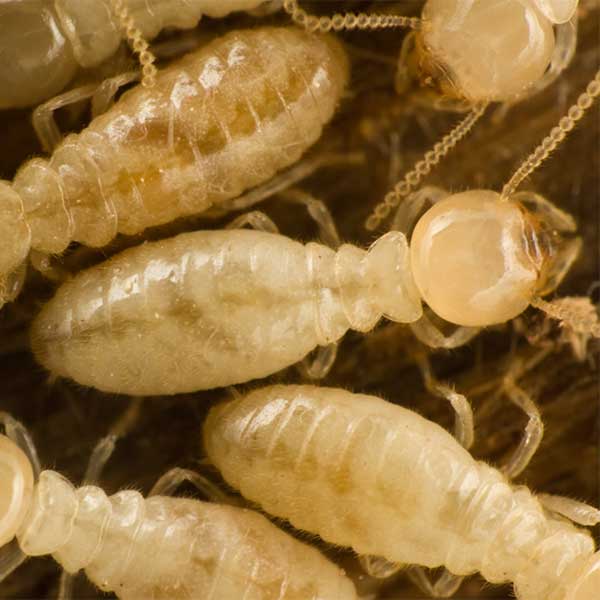
Subterranean Termite
Category Termites
Actual Size: 10 mm
Characteristics: Small and pale insects with soft, creamy-white bodies and darker, hardened heads.
Legs: 6
Antennae: Yes
Wings: Alates/swarmers have wings.
Habitat: These termites typically prefer environments with abundant moisture. They thrive in damp, dark conditions such as soil, decaying wood, and areas with poor drainage.
Habits:
- Estimated to cost homeowners $5 billion in repairs each year.
- They build colonies underground, using mud tubes to connect their nests with wood.
- Colonies can be enormous, sometimes housing hundreds of thousands to millions of individual termites.
Subterranean Termites in Florida
In every state except Alaska, subterranean termites are a major problem that can cost property owners hundreds or thousands of dollars in repairs. These termites feed on cellulose, the primary structural component of plant cells, making any wood material in a home a potential food source. They are known for building large colonies beneath the ground. Since their soft bodies need moisture to survive, they rarely show themselves in the open; instead, they build mud tubes to travel between their underground nest and potential food sources.
Subterranean Termite Habitat
Subterranean termites thrive in environments rich in moisture and organic material, so they are usually found in damp soil and decaying wood. These termites construct intricate networks of tunnels and galleries underground that allow them to remain hidden and protected as they forage for food. They often build their colonies near sources of water, such as leaky pipes, poor drainage areas, or beneath the foundations of buildings where moisture accumulates. These insects also create mud tubes, which serve as protective pathways between their nests and above-ground food sources.
Subterranean Termite Behaviors, Threats, or Dangers
Subterranean termites are considered the most destructive pest in the United States, and for good reason. Their massive colonies, sometimes numbering in the millions, can consume significant amounts of wood quickly and lead to major property damage. As they hollow out wooden beams, floors, and walls from within, they may cause homes to become structurally unsafe. And, since they rarely leave their colonies except to reproduce, identifying infestations is incredibly difficult. Routine termite inspections are the best way to catch and treat these pests as early as possible, before the damage becomes too severe.
